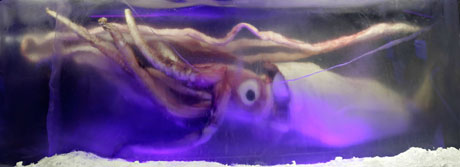Perfect Buoyancy
Buoyancy is one of those skills which is hard to teach in a classroom. To perfect your buoyancy takes practice and new divers often struggle with this important diving skill.
When you control your buoyancy you feel weightless underwater and float effortlessly at the surface. By learning to properly control your buoyancy you’re able to relax and avoid harming delicate marine life underwater.
New divers have a tendency to clutch their BCD inflator and rely on the inflate and deflate buttons to control buoyancy. Although you BCD (Buoyancy Control Device) is an important piece of the buoyancy puzzle it won’t give you the fine-tuning you can accomplish through swimming and breathing.
How pressure affects Buoyancy
To understand buoyancy we have to first understand pressure and how it affects air molecules both in our tank and in our BCD. In short, as we descend the molecules compress and as we ascend they expand.
As you ascend the air molecules in your BCD and your lungs start to expand. You want to deflate your BCD as you go up to vent the expanding air. This is also why you never want to hold your breath scuba diving, so that expanding air can be exhaled from your lungs. It is important to understand how pressure affects scuba divers.
How to perfect your Buoyancy
1. At the start of a dive deflate your BCD to descend, you should not be sinking uncontrollably through the water, this would make it difficult to equalize.
2. When you’ve reached the bottom, slightly inflate your BCD until you feel light and start to float off the bottom.
3. From here your lungs will help you fine tune your buoyancy. As you are swimming along try breathing in when you want to go up, and breathing out when you want to go down. This technique should be used to fine-tune your buoyancy and make changes of a few feet.
4. You can also try swimming up while you breath in and be swimming down when you breathe out. This can also help fine-tune your buoyancy while you navigate around a rock or coral.
Positively Buoyant
When you are floating in the water and you don’t need to kick and swim to keep your head above the surface of the water. You can become positively buoyant at the surface by fully inflating your BCD before you enter the water or once you have resurfaced after a dive.
Neutrally Buoyant
When you are gliding through the water and it feels like you’re flying over the reef. For new divers this may seem elusive, however with practice being neutrally buoyant becomes second nature. We can become neutrally buoyant by inflating and deflating our BCD, through controlled breathing and swimming up or down to avoid objects.
Negatively Buoyant
When you are sinking or falling through the water, or when you find yourself touching the sand or seabed while diving. If you are feeling heavy like a rock, slightly inflate you BCD and take 3-4 breaths, if you are still feeling heavy repeat the steps. Being overweighted or descending too quickly can make it difficult to equalize.
Remember never hold your breath when scuba diving.



